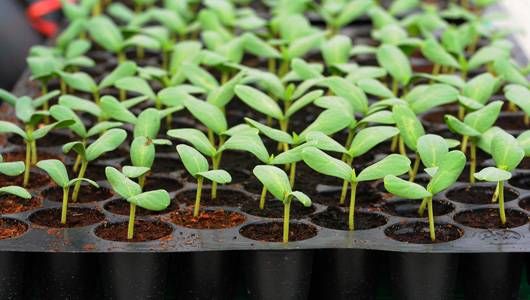Hardening off Seedlings

At this point my seedlings are well under way, with the tomatoes already a gangly 4 inches tall. I begin to turn my mind to thoughts of bringing these seedlings outdoors into the garden, then….. WHAM another freezing spell of weather hits and I am taken back to last year when the unexpected frost on May 24 weekend took out all but my most hardy plants. Devastating. I have to admit though that they may have done better had I paid closer attention to the process of hardening them off.
Growing from seed is in so many ways a rewarding pass time. First it reduces your overall cost to produce fresh, organic food for your family. Seeds cost less than plants and if you are really zealous and collect seeds from a previous harvest your cost is almost nil. The second reason is the satisfaction of knowing that from conception your plant has been exposed to only what YOU have added to them.
It’s a common question; how big should the seedling be before it is time to transplant to the garden? The trick is in the leaves. When seedlings first sprout the are mostly unidentifiable as the plant they will become. Mostly because the leaves themselves look nothing like the leaves of the eventual full grown plant. The technical term for these first leaves is cotyledons. Later when the plant is larger it will begin to form the leaves that look more like their future selves. Once there are a few of these typical leaves, and the plant has a stronger stem it is time to begin the hardening process.
Hardening involves prepping the plant for two forces of nature, one is the direct sunlight and the other is the cooler temperatures. The process should take approximately 7-10 days, rushing this could spell disaster so be patient!
On a mild day take the seedlings outside to a sheltered area, for approximately 2-3 hours. After this return them back to their indoor location. Increase this time outdoors by 1-2 hours each day, avoiding any situation where the plant is exposed to strong winds or freezing temperatures.
Reduce the frequency of your watering over time but do not allow them to wilt. After the 7-10 days are up you should have the seedlings outside for 24 hours at a time. After several 24 hour periods it’s time to place the seedlings into the garden. Use a weak fertilizer solution to get the transplants growing again and to avoid transplant shock. Be mindful of the weather forecast, as if a cold snap is predicted be sure to cover the plants with a cold frame or create a staked tent using clear plastic sheeting.
Always be aware of the hardiness of your plants, certain vegetables like Kale, Radishes and Onions will tolerate evening temperatures of around 5 celsius. Warm season crops like cucumbers, peppers, tomatoes and eggplants prefer an overnight temperature of close to 15 celsius.
It’s a little early to start this process but begin preparing now as warmer weather is right around the corner.

